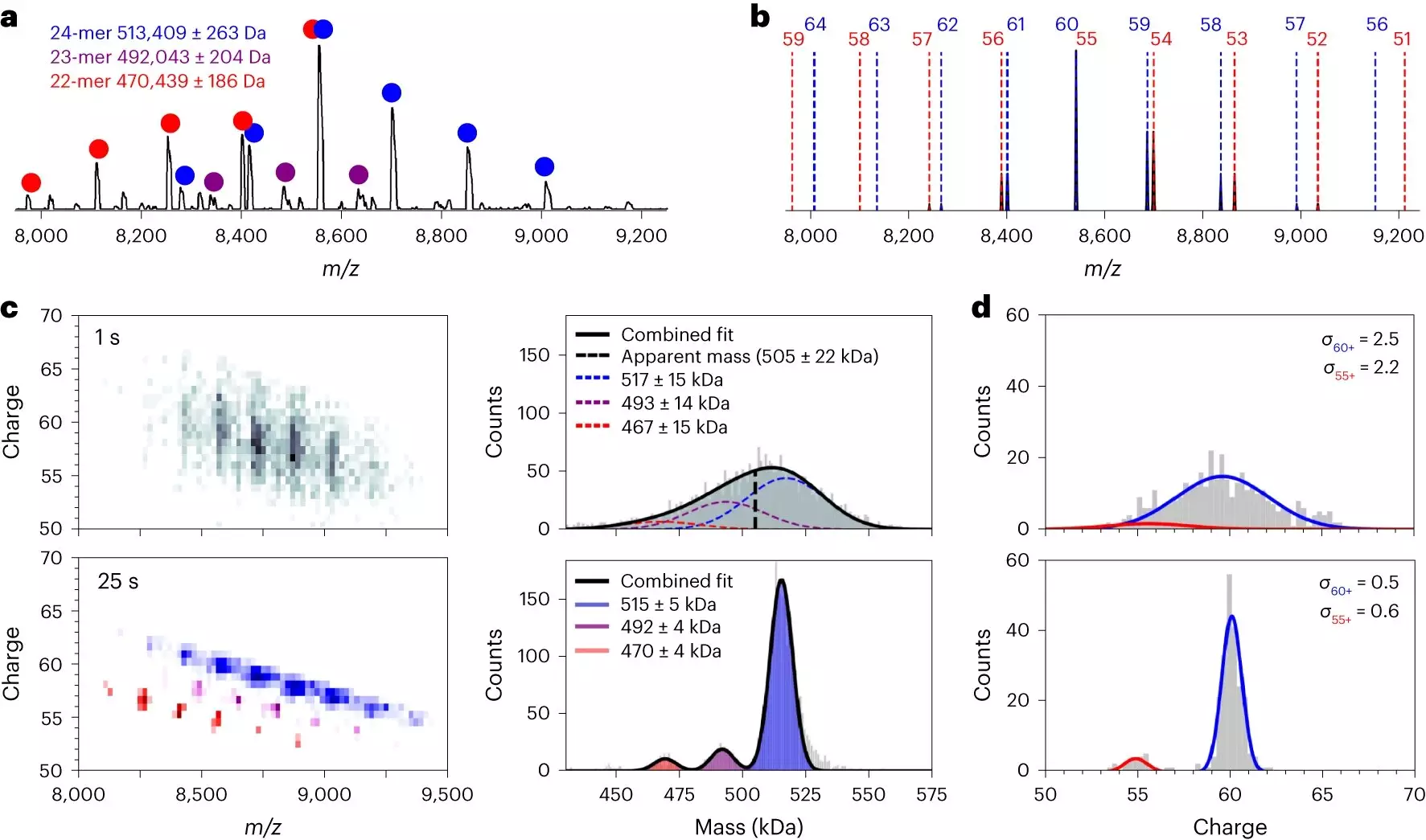A recent study conducted by a team of chemists led by Prof. Albert Heck has revolutionized the way molecules are analyzed and understood. Through significant improvements in current measuring equipment, the team was able to trap and observe individual molecules for an unprecedented period of up to 25 seconds. This extended observation time has enabled them to uncover finer details of molecules, thereby enhancing their overall understanding.
The precision upgrade achieved in this study is nothing short of remarkable. In fact, it is analogous to measuring a mass difference of one in a million, as explained by Heck himself. To put it into perspective, Heck likens this precision to being able to discern that a single sugar grain is missing from a full bag of 1 kilogram of sugar. Such a level of accuracy opens up a whole new realm of possibilities for the field of molecular analysis.
Traditionally, chemists utilize a technology known as mass spectrometry to examine the composition of molecules. While this method offers detailed analyses, its limitation lies in the fact that it examines millions of molecules simultaneously. This complexity makes it challenging to study large molecules, as the high number of trapped molecules tend to interfere with each other. To address this issue, the team developed a novel method wherein a single molecule is trapped in an Orbitrap and set spinning rapidly. By analyzing the spinning behavior, they can then determine the mass and composition of the molecule.
Typically, this method is only capable of recording signals for a brief duration of around 25 milliseconds. However, through innovative modifications to the data acquisition process, the researchers were able to trap and monitor individual ions for an astounding 25 seconds. This breakthrough can be likened to swinging on a swing – the longer you swing, the more accurately an observer can measure your rhythm and deduce characteristics about you. Similarly, by trapping spinning ions for an extended period, scientists can extract more detailed information about their spinning frequency and better characterize molecules.
The ability to measure giant molecules with such precision holds immense potential for progress in various fields. For instance, in the production of therapeutic molecules like viruses used in gene therapy, this advancement could prove to be invaluable. Currently, developers of gene therapy viruses struggle to verify whether a virus contains the specific gene it is intended to deliver. By increasing the efficiency and accuracy of measuring the difference between ’empty’ and ‘filled’ viruses, developers can significantly enhance the success rate of these therapeutic interventions.
The groundbreaking research conducted by Prof. Albert Heck and his team represents a significant advancement in the field of molecular analysis. The ability to observe and analyze individual molecules for an extended period has opened up new avenues for further research and innovation, particularly in areas such as vaccine development and gene therapy. This breakthrough serves as a testament to the power of scientific innovation and its potential to drive meaningful change in our understanding of the molecular world.


Leave a Reply